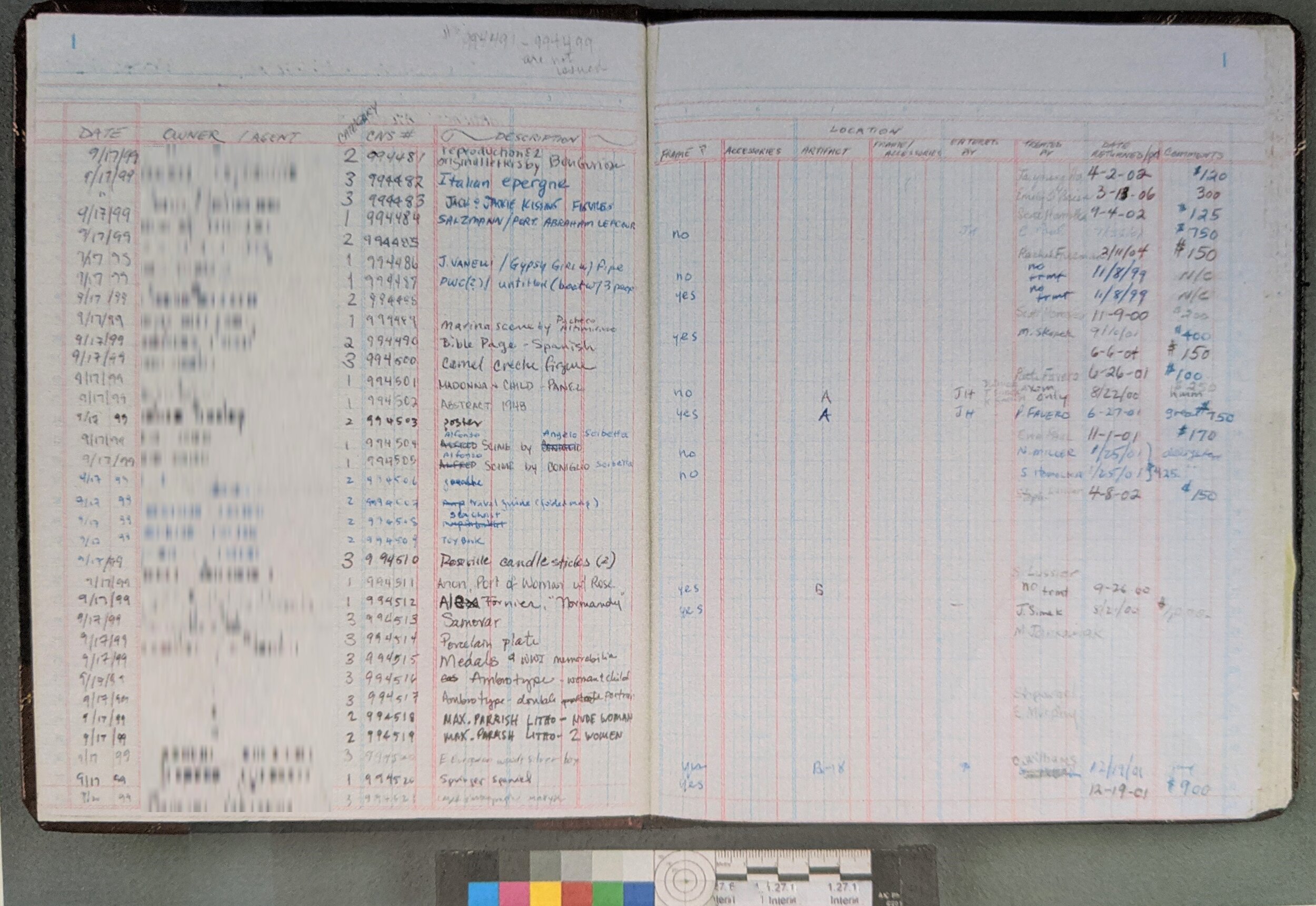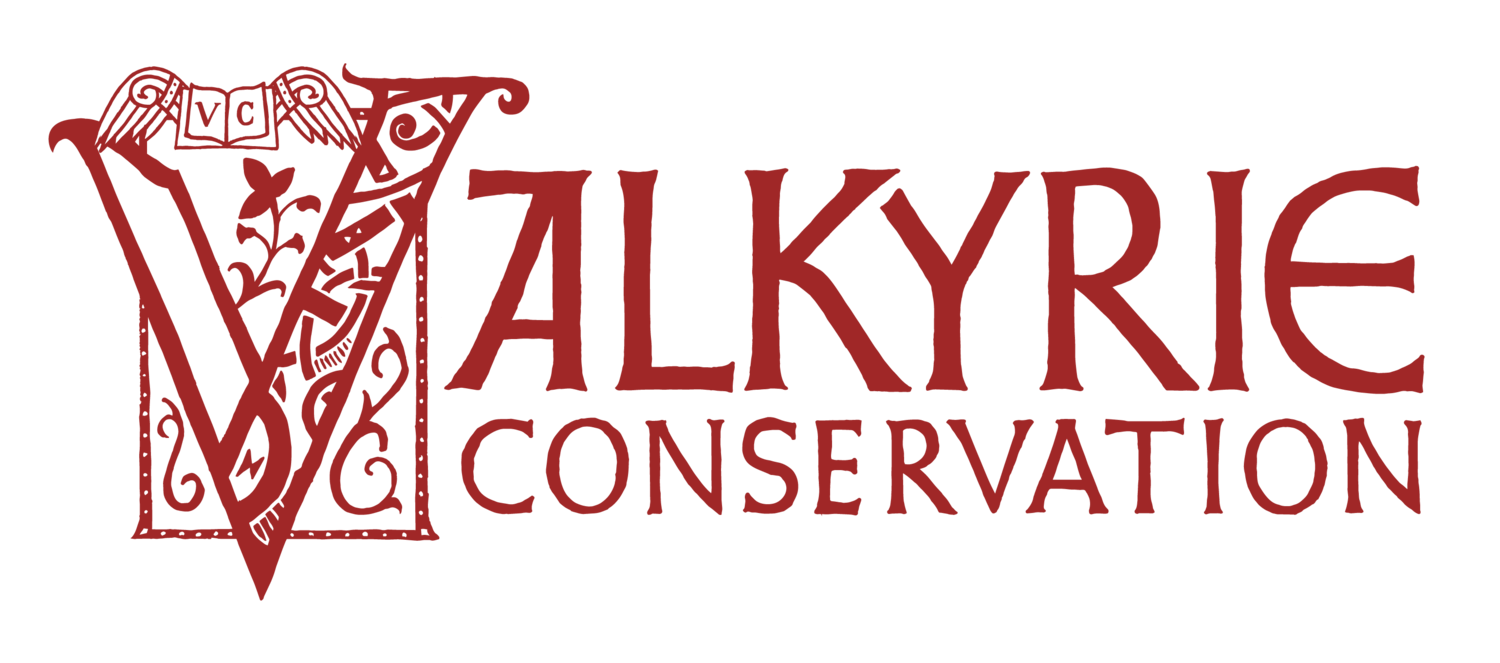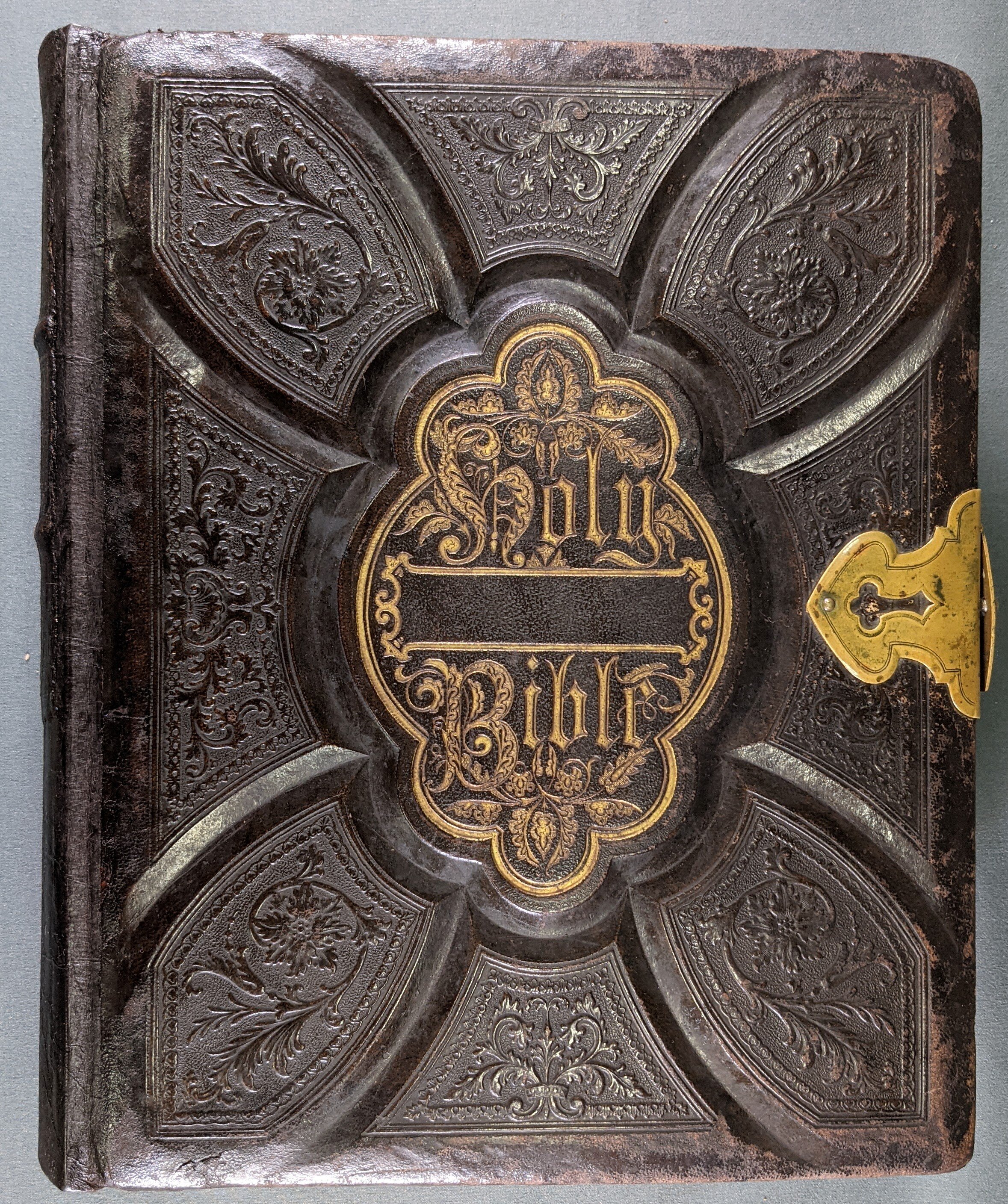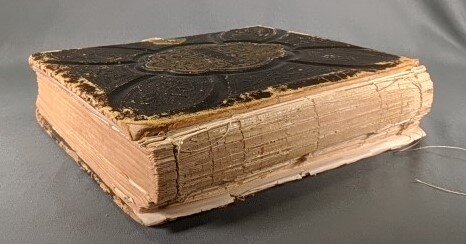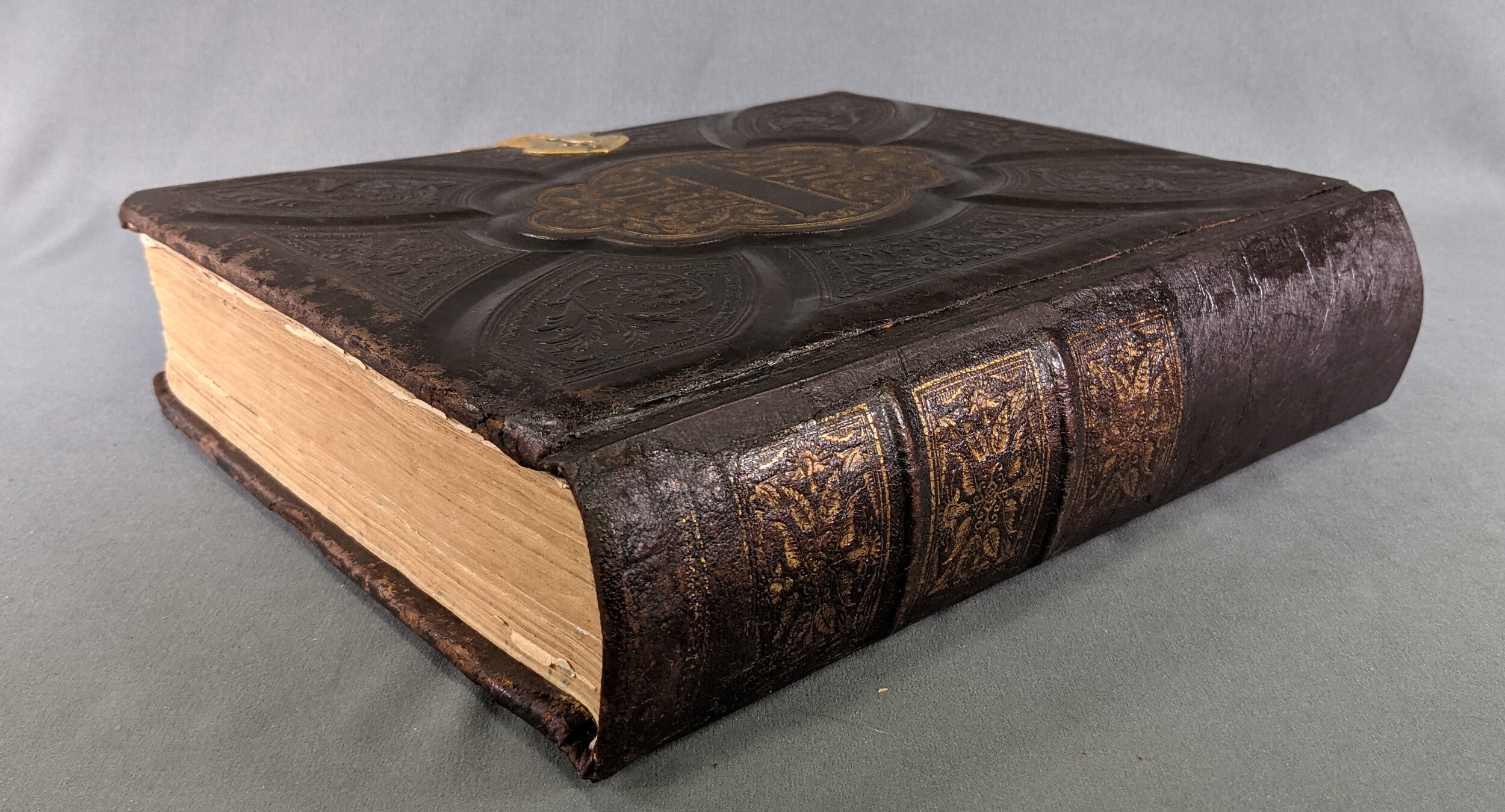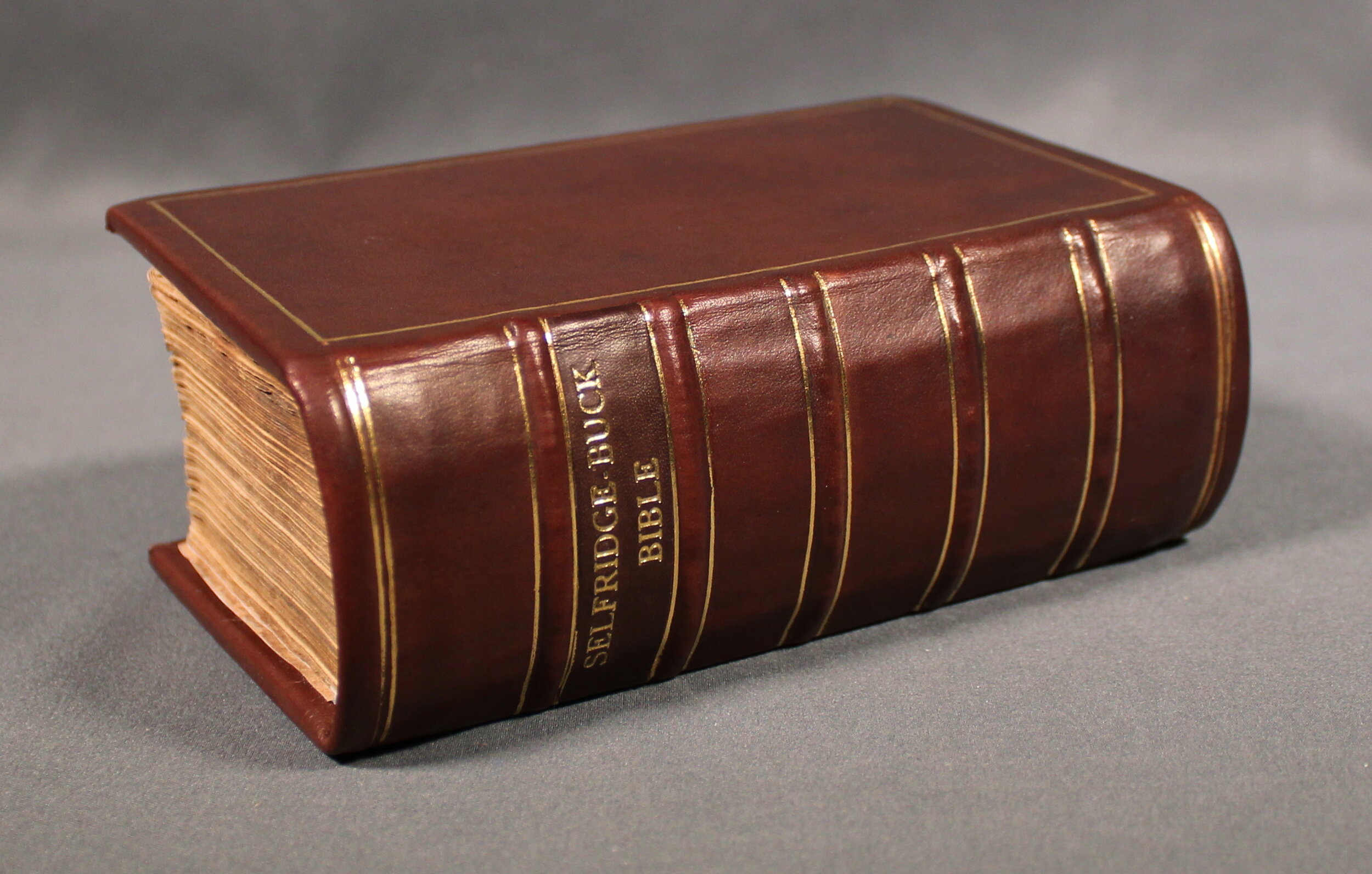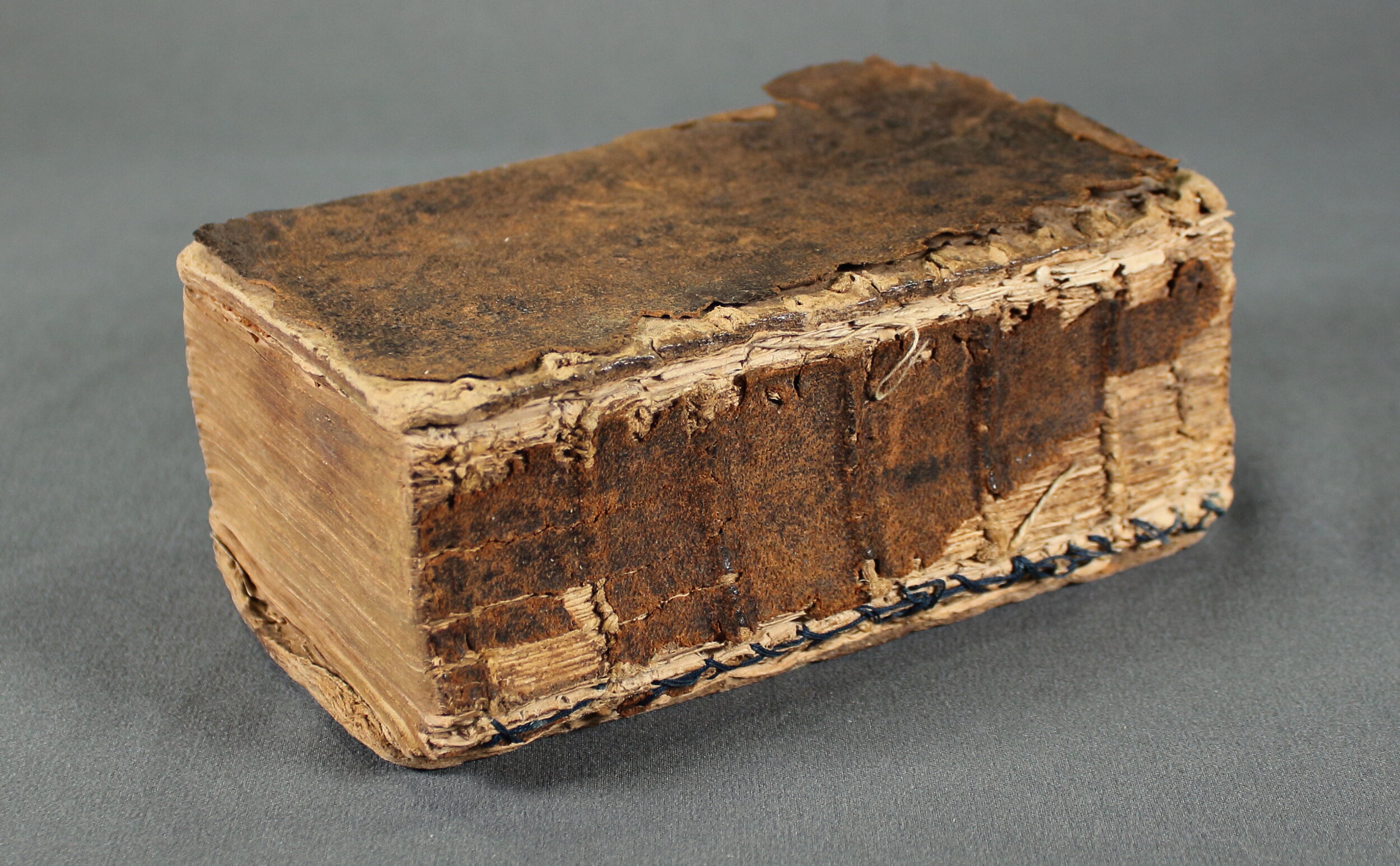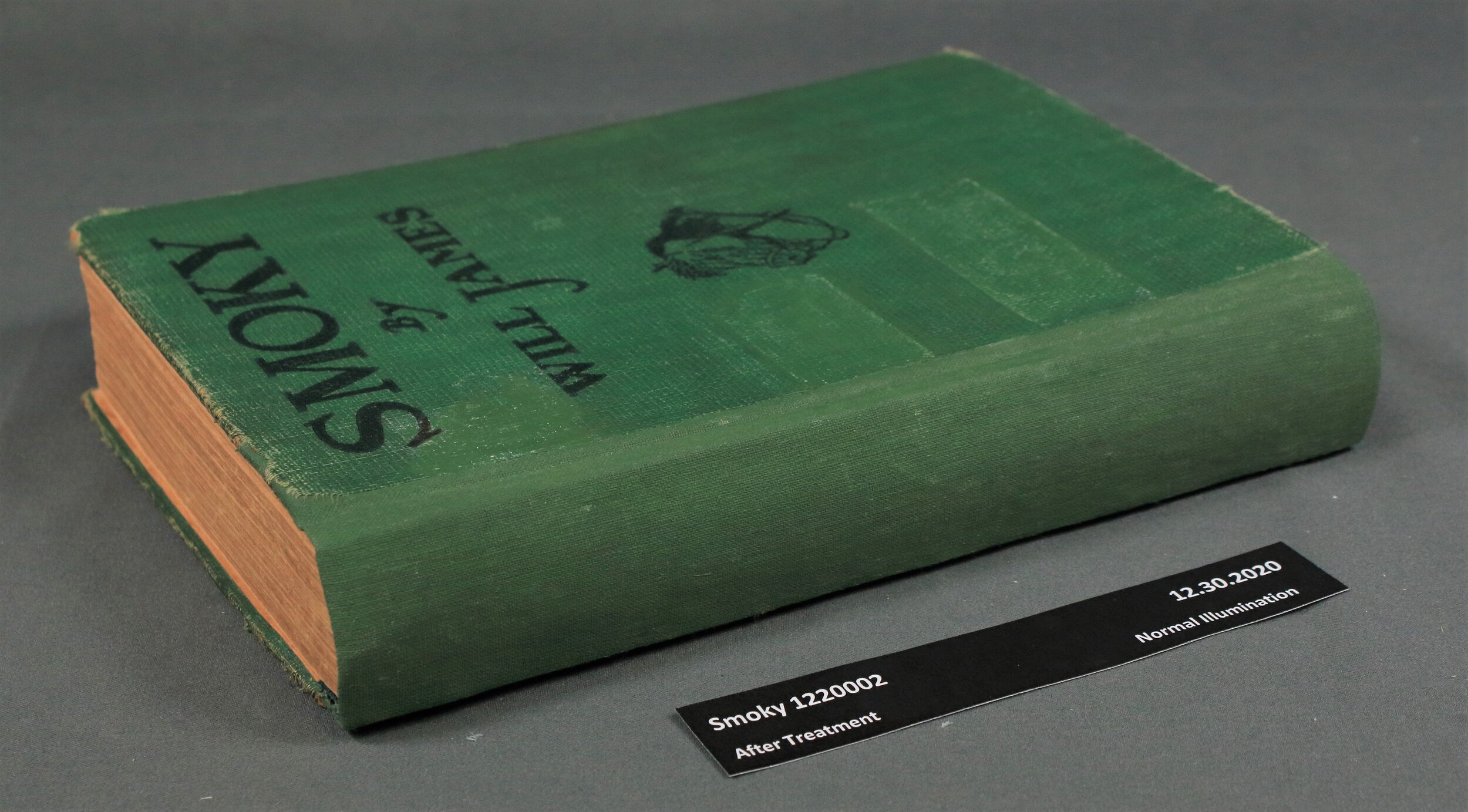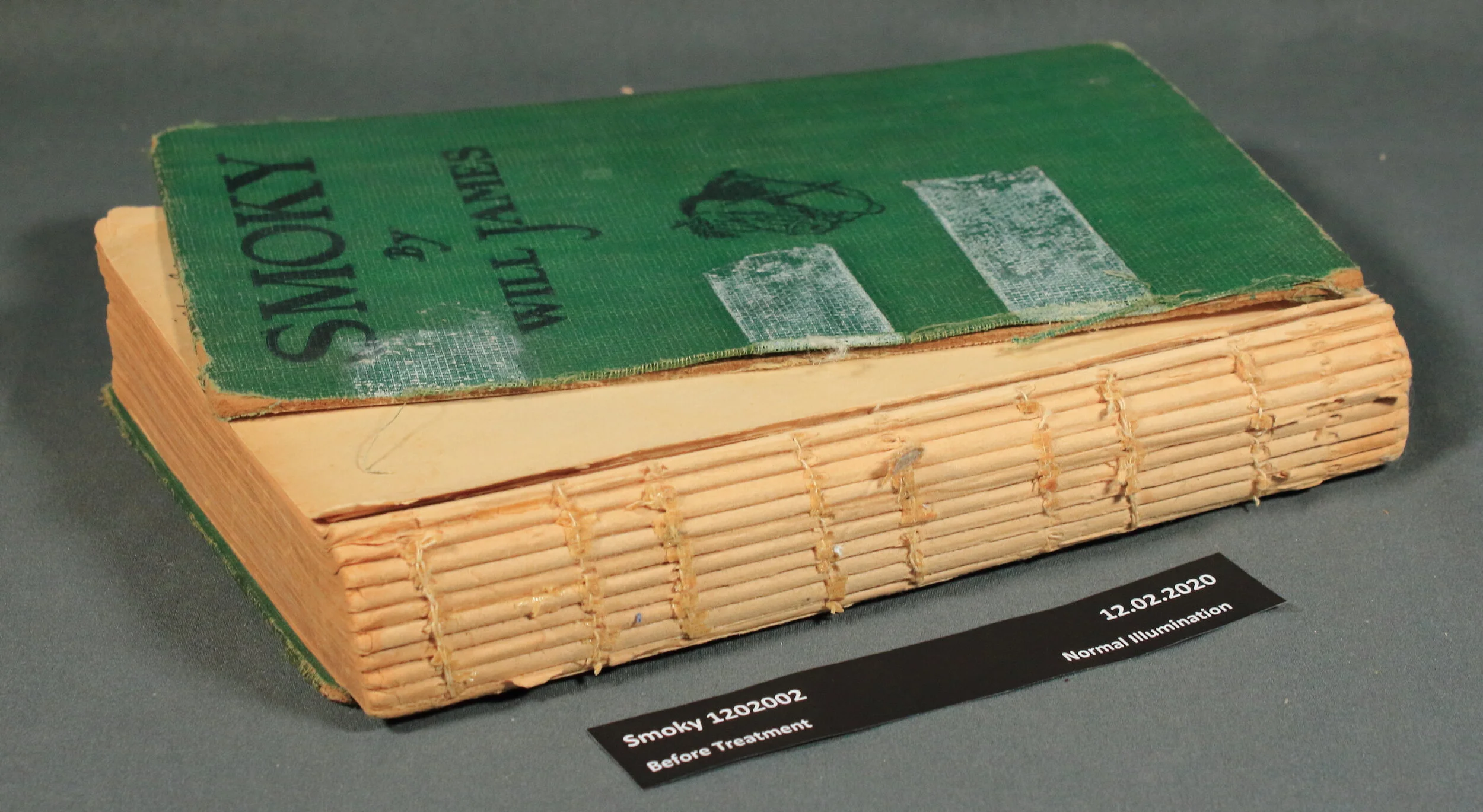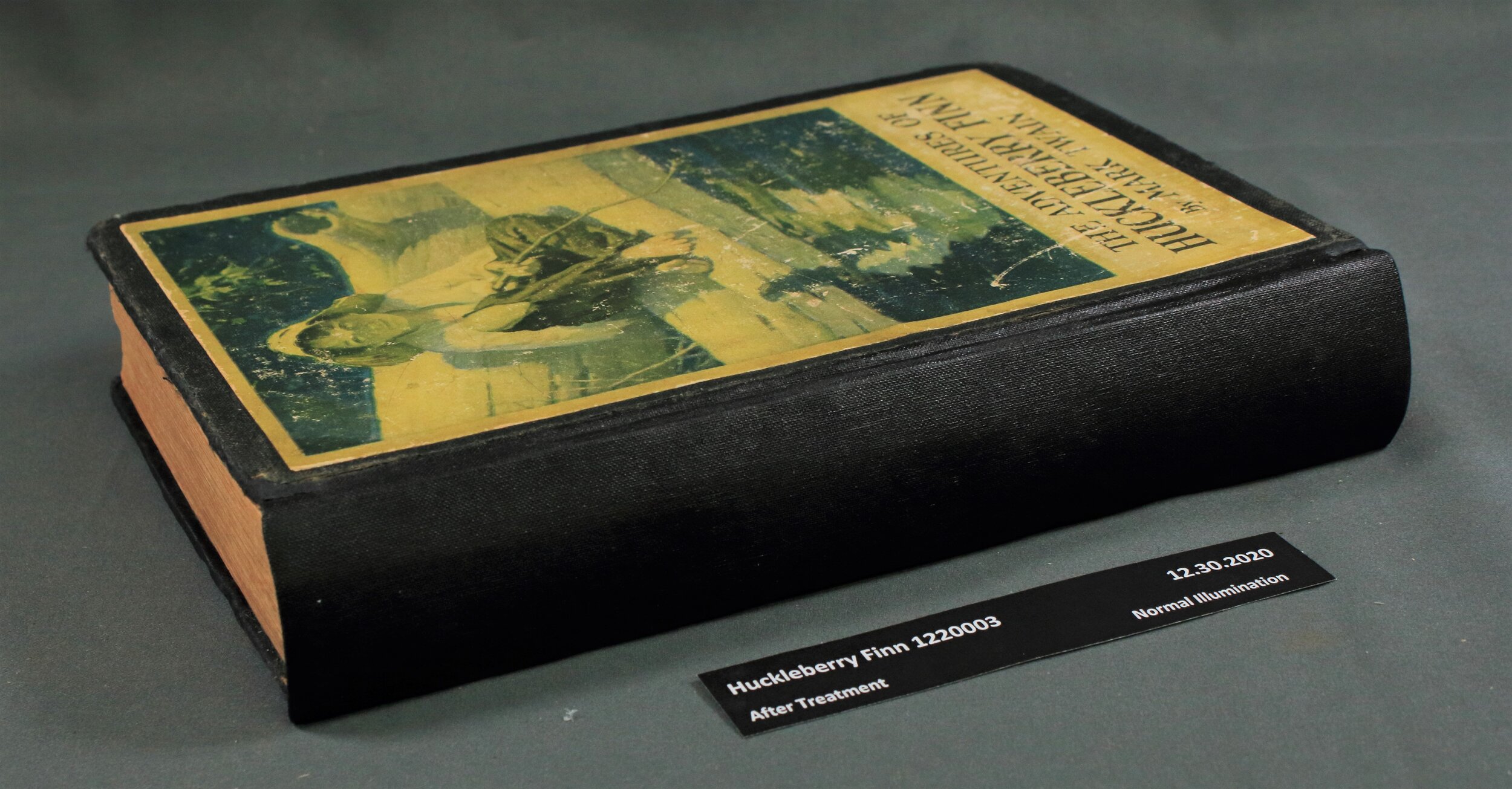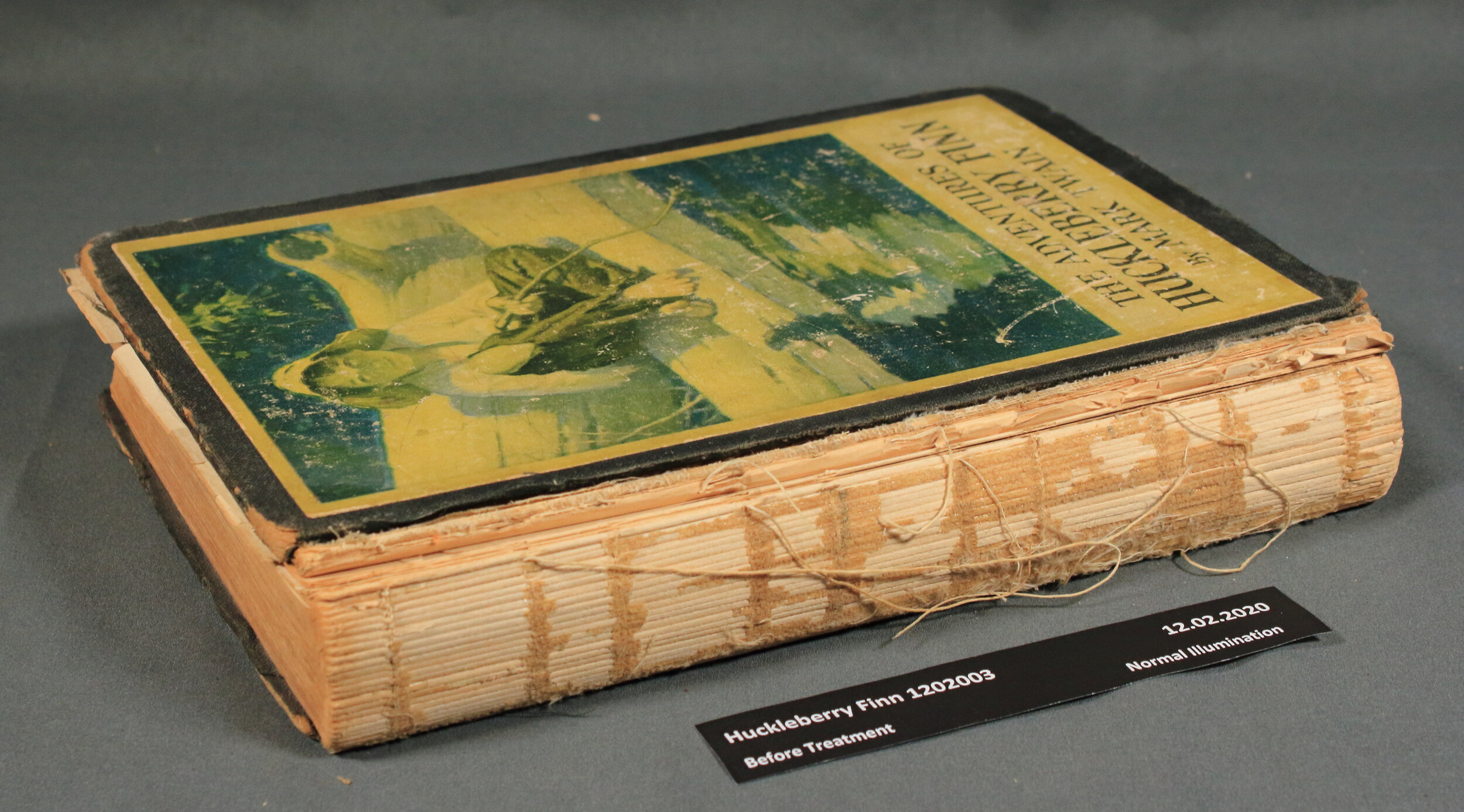RECENT PROJECTS
19th Century Family Bibles
This is a very common treatment that I come across with my clients. These bibles were quite popular gift items in the 1800s. Constructed to be grand and ornate, they are extremely heavy and often are not strong enough to hold themselves together after so much time. Very commonly the boards become detached because the joint attachment are not strong enough. This particular bible had detached boards, an exposed spine, and loose sewing. The spine is repaired with a heavyweight Japanese tissue toned with leather dyes and coated with SC6000 wax to match the sheen of the original leather. The new text-to-board attachment is a strip of linen that is adhered and sewn to the spine of the textblock and secured inside each board which was split with a lifting knife.
Full Rebinding
18th Century Family Bible
This client came to me with a precious family heirloom from 1767. This little Bible had been in his family for 250 years. It had been well-loved and well-weathered. The main goals that we set out to accomplish with this treatment was conserving the multiple pages of handwritten family genealogy and to also help the Bible to be a functional book again. The genealogy pages were too delicate to be sewn back into the textblock, and so a decision was made to create facsimiles of the pages for the binding and then treat the pages separately. The pages were washed, lined, and encapsulated so that they could be studied without risking damage. The Bible was rebound on raised cords, covered in hand-dyed calfskin, and simply decorated with gold-tooling.
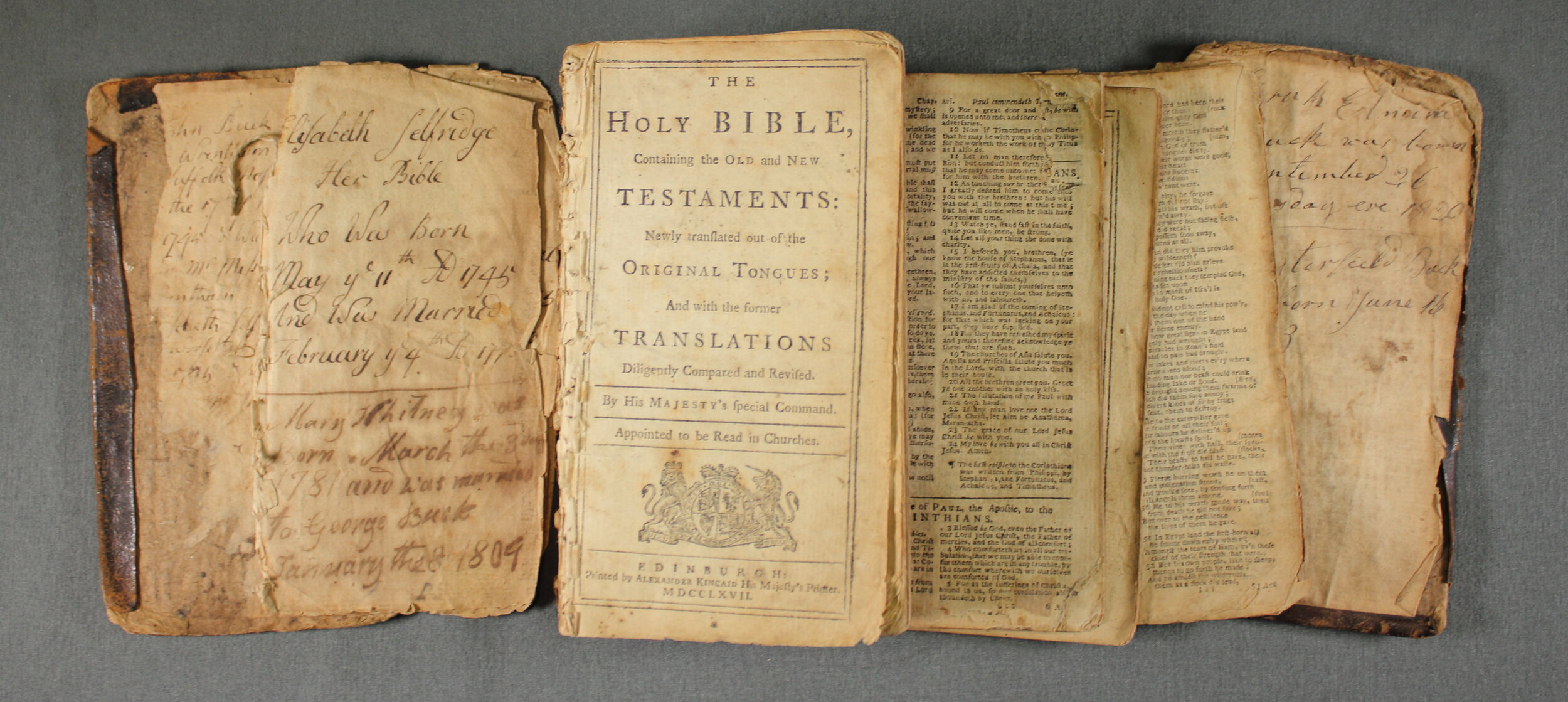

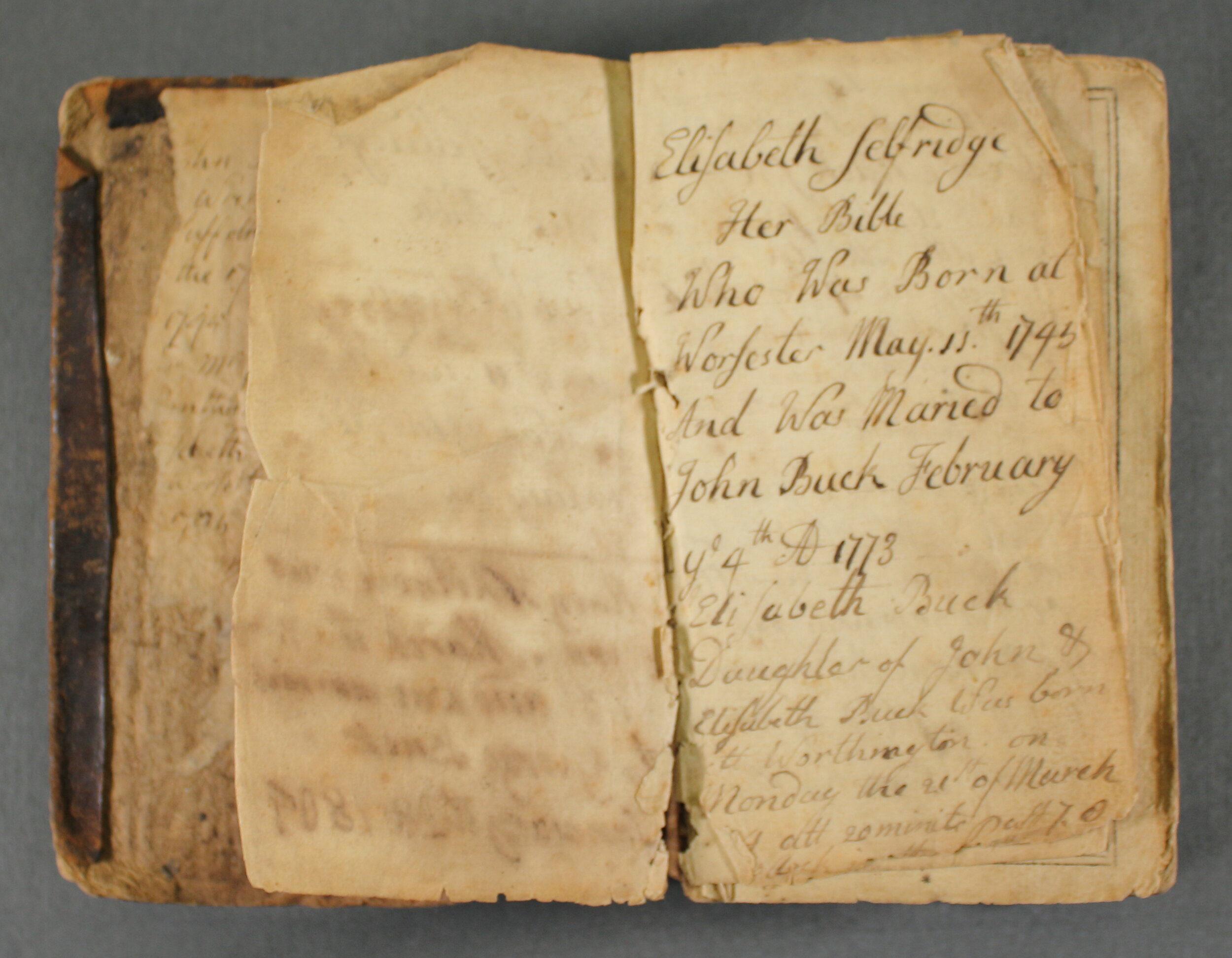
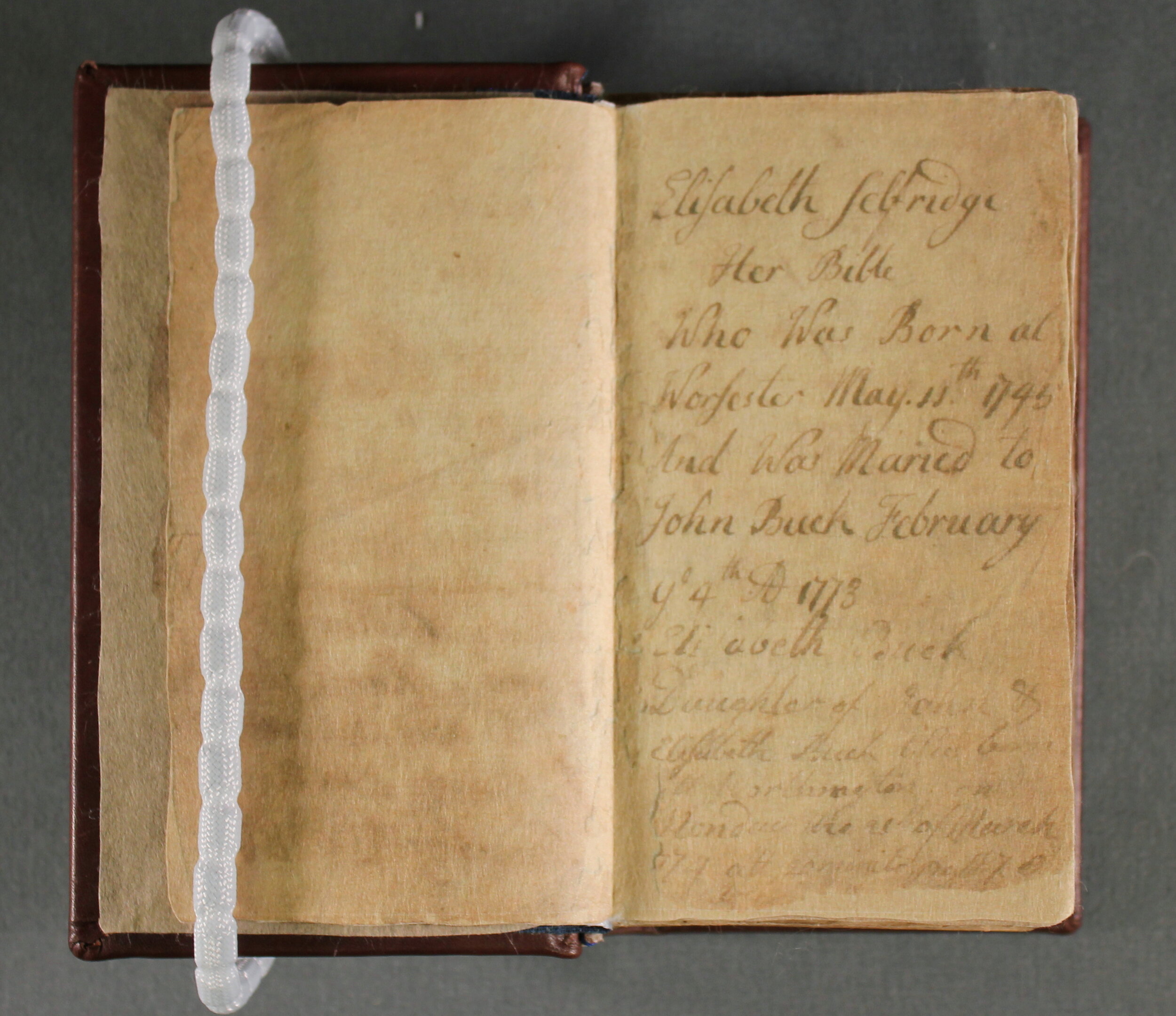
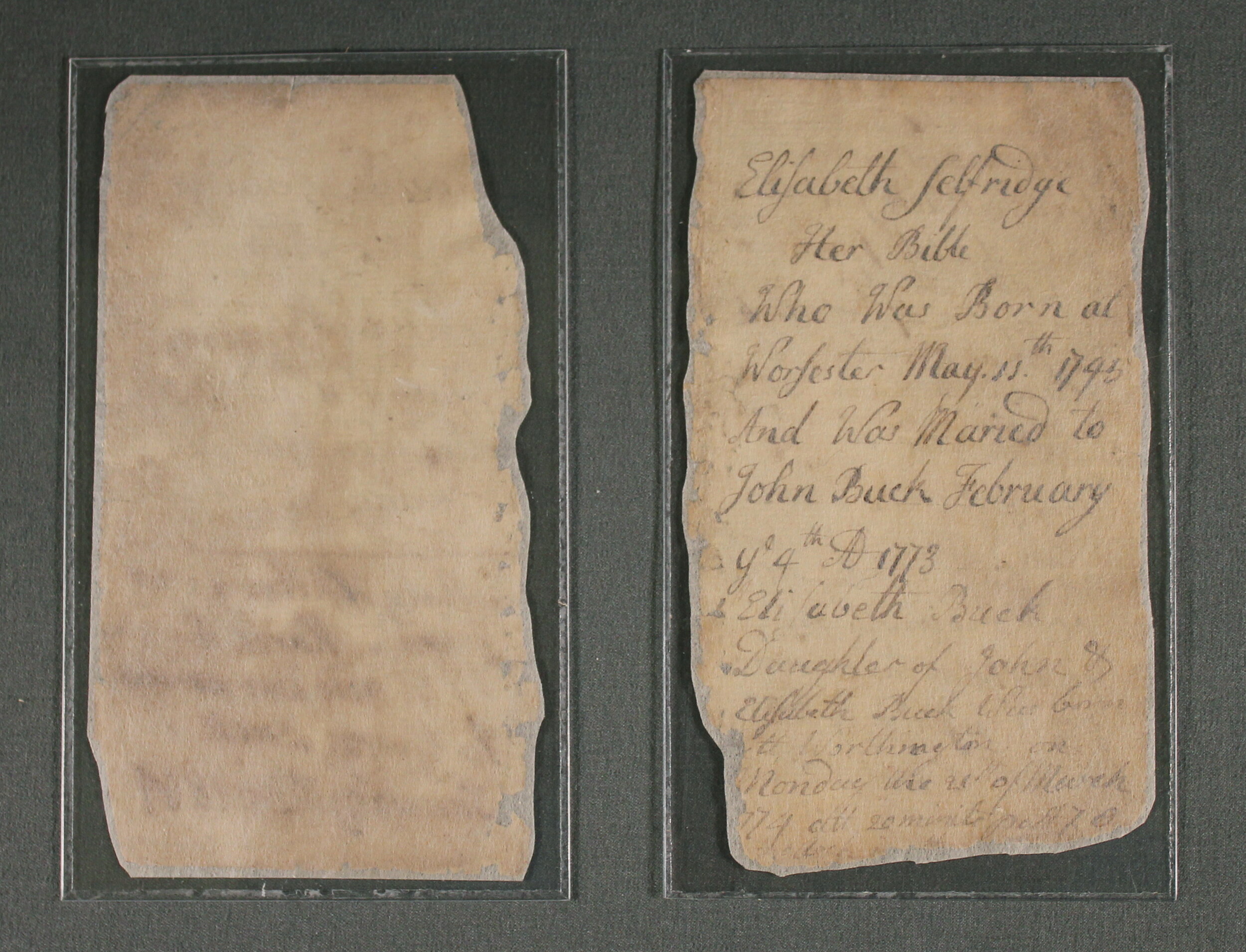
20th Century Cloth Rebacks
Smoky the Cowhorse, 1930
The client wanted this book fixed up as it had been a well-loved book of her father and wanted the book stabilized so that she could hand it down to her nieces and nephews. The primary condition issues included an exposed spine and detached cover boards. Several pages had also come loose over the years. You will also notice some white residue on the covers, which is all that remains of the medical tape that the client had used to attach the cover years ago. The exposed spine made the sewn sections very fragile and it had become very risky to open the book without causing further damage. I rebacked the book with a new linen spine with a hollowtube along the spine to support it’s opening. Testing was done with mechanical and chemical means to find a way to reduced the white residue on the cover, but nothing worked without risking damage to the original cloth cover. After consulting the client, I placed a barrier layer of methylcellulose over the residue and then applied light layer of acrylic pigment to lessen the brightness of the residue.
The Adventures of Huckleberry Finn, 1923
This book was also brought in by the client to be fixed up before it was passed down to the next generation. It was also brought in with its companion novel Tom Sawyer, and so they both underwent the same cloth reback treatment so they could match as a pair. The main issue was that the cloth spine was missing, exposing the spine. The first three sections of the book had also become loose and detached from the rest of the textblock. The front cover board was also detached. The loose sections were sewn back onto the textblock and title pages were hinged back onto the textblock using Japanese tissue. A new spine was made from toned book cloth and attached to the book with a natural hollow construction. The frayed edges of the cover were treated using a black Japanese tissue adhered along the edges and underneath the original cloth.
Full Rebinding Treatment: Q. Curtii Rufi historiarum libri: accuratissimae editi; Elsevier, 1633
This was an interesting treatment that was specifically designed for the institution it belonged to- a small museum library. It had remnants of the previous full leather, tight-back binding along the spine, but was unfortunately missing both boards (covers). The adhesive along the spine was so brittle the textblock had split into two halves at a preferential opening, and because the adhesive had been applied so thickly the pages could not be opened far enough to read them. This little book was frequently handled and used during workshops and classes held at the library. After discussion with the librarian, we decided the best course of action was to fully rebind the book. This meant sacrificing the remnants of the old leather spine and the finer appearance of the gilt edge decoration. The benefit however was that the contents of the book could once again be accessed and safely handled without incurring further damage to the binding. The full leather binding was completed with very subtle blind tooling so that there would be no mistaking the treatment while also allowing it to look aesthetically pleasing on the shelf amongst other historical bindings.
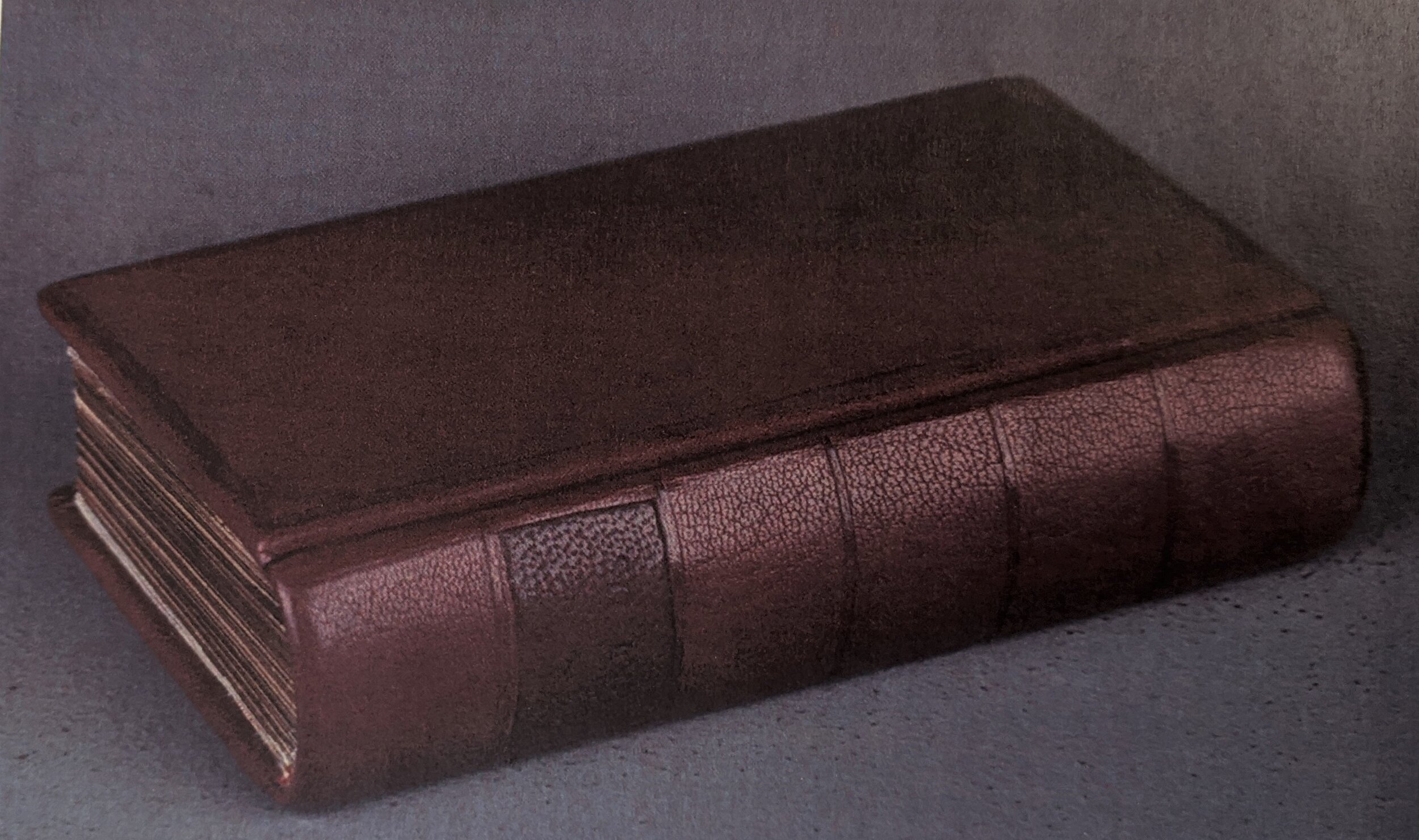

Paper Treatment: Union Square in Midsummer, Color Lithograph from The New York Mirror, 1882 (28” x 22”)
This little piece of NY theatre history had incurred lots of wear and tear over the last 140 years. The paper support that the image was printed on was heavily creased or torn and mutiple areas with losses. It had become impossible to handle the poster without risking further tearing. Treatment was geared toward stabilizing the paper structure with Japanese tissue mends. But the owner also wanted to see if anything could be done to reduce the appearance of the numerous stains across the surface. The poster was dry cleaned with eraser crumbs to reduce surface dirt and dust in preparation for washing. Initial discoloration was reduced using a float washing method where the poster was washed with pH adjusted water. Stains were further reduced using light bleaching, which also aided to enhance the colors within print. The tears and losses were mended with Japanese tissue paper and small areas were inpainted with watercolors to better integrate those repairs. The overall structure of the paper was much improved and the poster was given a matboard window mount for safe transport and storage.
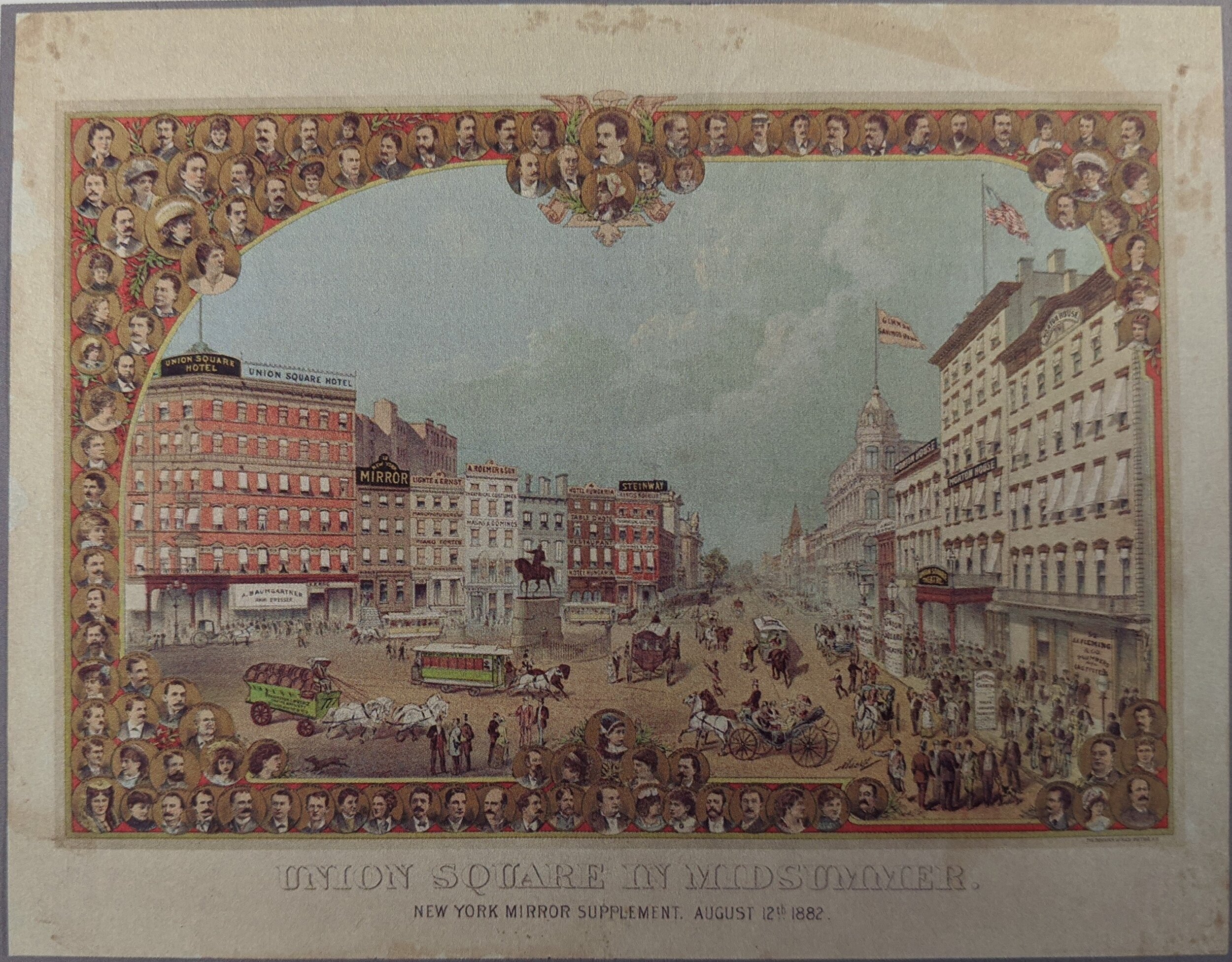

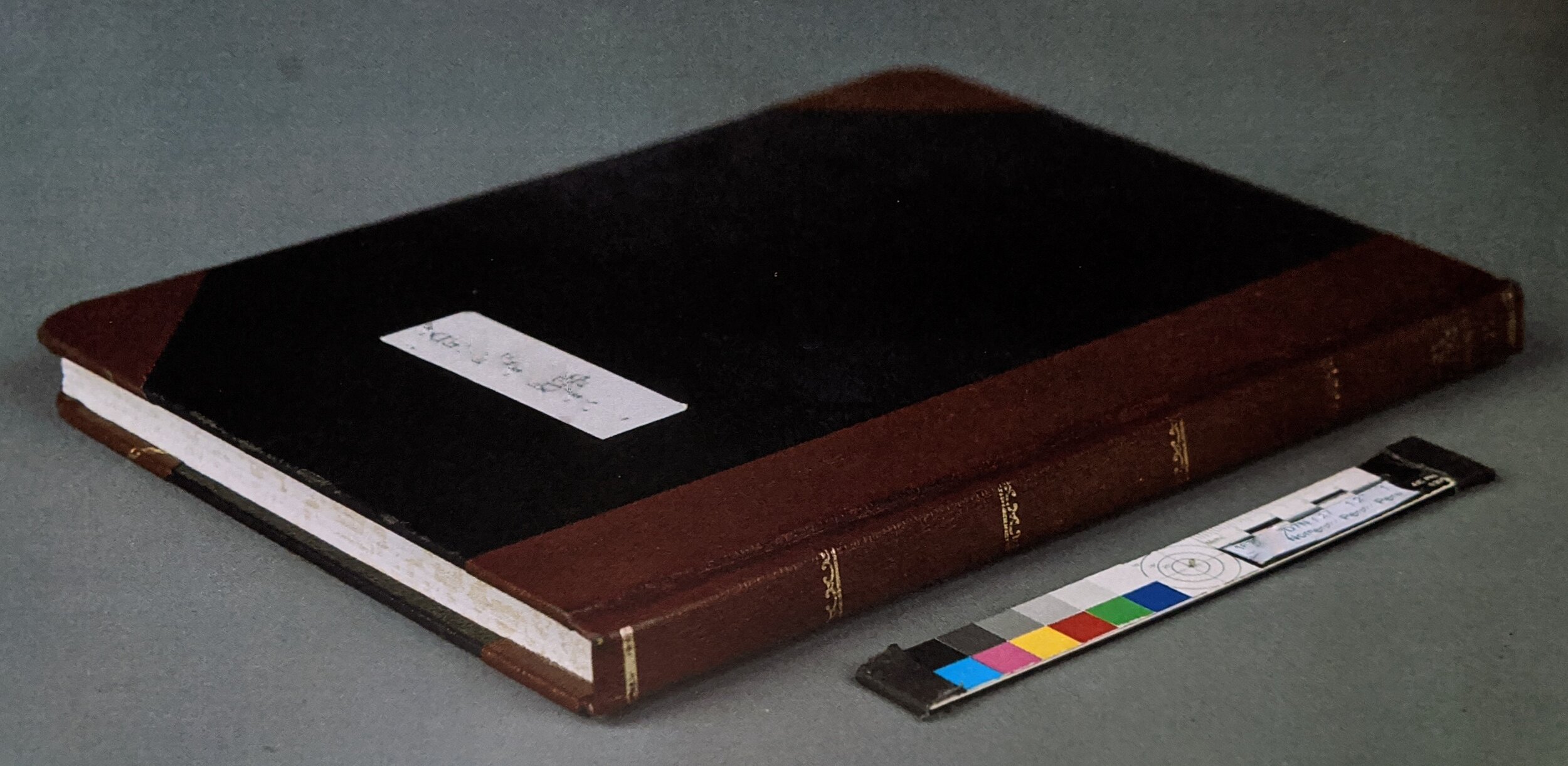
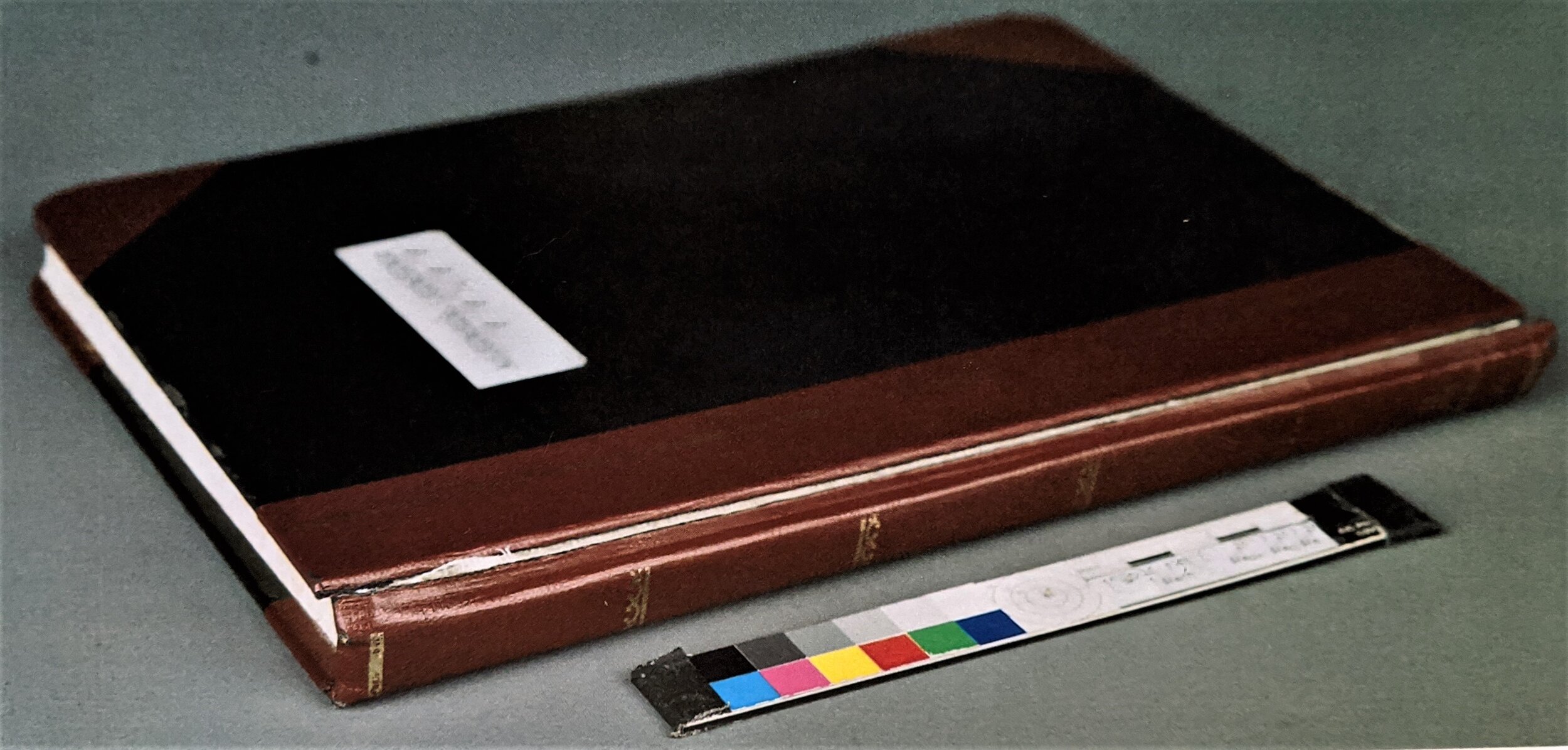
20th Century Ledger Binding
This binding was actively being used for record keeping, however the spine of the cover had detached and the sewing was loose. The pages were beginning to fall out. It was important to develop a timely treatment that strongly reinforced the binding at the spine as it would would be actively used for years to come.
Note: Identifying marks and names have been blurred to maintain privacy.
